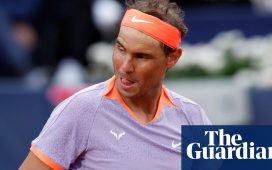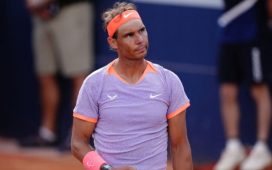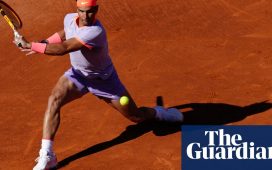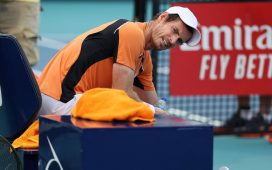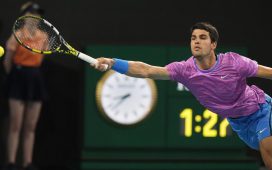Fifteen years ago, Maria Sharapova arrived at Wimbledon and produced one of the biggest tennis stories in history, storming to a maiden slam title at 17 years old. Her precociousness was astounding. She finished her first press conference by announcing: “I’m here to win it.” Before her semi-final against the former champion Lindsay Davenport, she said: “She won this tournament and I want this tournament.” In the final, she shocked Serena Williams with her relentless depth of shot and a fearlessness. Everything about her first triumph seemed natural.
This past week, Sharapova, five times a grand slam champion, returned to competition for the first time in four-and-a-half months at the Mallorca Open, a tiny grass court event held in a secluded corner of the Spanish island. Sharapova is 32 now and in February underwent a second surgery on her right shoulder. Mallorca was her fourth tournament of the year and her first since January, when she lost in the quarter-finals at Shenzhen and in the fourth round of the Australian Open before withdrawing before her second-round match at St Petersburg, because of her shoulder. Though she is in Britain this coming week she will not be playing at Eastbourne. Wimbledon, starting a week on Monday, is quite a challenge.
Tennis is no longer as natural and as automatic as it once was for Sharapova. She has not been the same player since her first surgery a decade ago and part of her story is the way she overcame her medically repaired shoulder that haemorrhages double faults to succeed on clay, a surface she seemed to have no business performing well on. More than ever, there are players who hit harder, serve more consistently and move quicker.
In the second round in Mallorca, Sharapova faced one such player: the defending Wimbledon champion, Angelique Kerber. Across the net from Sharapova, Kerber came alive. She chased down every Sharapova shot and deflected some of her best blows for spectacular winners, ending with an easy 6-2, 6-3 win. Despite Sharapova’s shrieks, even the roars that punctuated Kerber’s best shots dwarfed her.
After years of stepping on to the court and inspiring fear, her vulnerability is now a source of inspiration for her foes. Every player remains desperate for her scalp and Sharapova has frequently failed to hold them off.
The two years since Sharapova returned from her suspension for taking the controlled drug meldonium have, at times, been catastrophic. She is currently ranked 85th and at no point has she returned to the top 20, peaking at 21. She has reached one slam quarter‑final. Her first three losses of her return in 2017 were to three of her most vocal critics – Kristina Mladenovic, Eugenie Bouchard and Mirjana Lucic-Baroni. Her grand comeback was marred by a traumatic thigh injury that, after all the talk of wildcards, left her incapable of playing.
Even Sharapova’s recent successes are compromised by injury. At the 2017 US Open, she marked her return to grand slam competition by producing a fearless display of aggressive tennis to overwhelm Simona Halep in the first round, her first slam match back from her 15‑month ban.
It was a moment and it came with a message. “Behind this little black dress and the Swarovski crystals, there is a girl with a lot of grit and she’s not going anywhere,” she said. But it did not resonate for long. The forearm injury she nursed until her fourth-round loss would trouble her for another six months. By the end of 2018, she received the worst news, a recurrence of her shoulder injury.
After the desperate fourth-round US Open defeat last year to Carla Suárez Navarro, Sharapova was asked if she was facing the most challenging period of her career. She shook her head. “What’s challenging is when you’re a teenager and you have a few hundred dollars and you’ve got no sense of the future, you don’t know where you’re going to end up,” she said. “You just have a dream. That’s a lot tougher than being 31 years old and having the opportunity to do whatever I want in my life.”
Sharapova’s response was a dose of perspective, a reminder of the difficulty of her origins. But she is often quick to remind people of her roots and the story that underlines her success – when she is not selling her sweets, she is selling her brand.
It is not hard to imagine that Sharapova would have retired by now if she had not been banned. But over the past few years, her ban and her frosty relations with Williams over her autobiography have commanded most of the attention.
And so she will return to Wimbledon still fighting and still looking to turn her story around.
